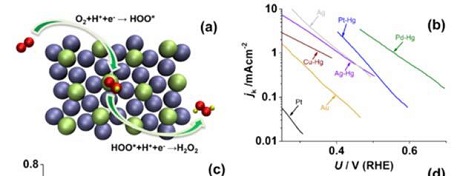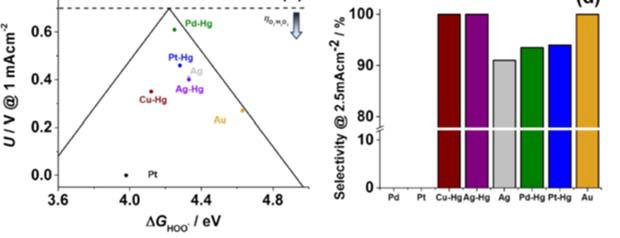Project period: 2016-2020
Grant: DK kr. 4,5 mio.
The vision of the project is to change the production of chemicals towards a more sustainable direction. To reach this goal, we plan to initiate an environment for the whole value chain of materials
development for environmentally friendly, electrocatalytic production of valuable chemicals in Denmark. Today most chemicals are derived from oil by heterogeneous catalysis. Chemical reactions have to be downhill in free energy. Conventionally, using heterogeneous catalysis this energy has to be provided by the conditions (reactants, temperature and pressure). Therefore, the energy contained in chemical bonds in oil is needed to drive the reactions. Production of some chemicals therefore relies on dangerous process conditions (e.g. high temperature and pressure), costly starting molecules and/or low yields due to low selectivity. Oil is a limited resource; at some point we will need to transform to a sustainable way of producing chemicals. An alternative feedstock is biomass, where the energy in the sugar molecules is stored via photosynthesis. But photosynthesis is very inefficient. Normally less than 1% of the energy from the irradiation from the Sun is stored in biomass. It is beyond doubt that biomass cannot cover our demands of food, fuels and chemicals, not to mention the demand related to nature itself. Alternatively, chemicals with a high‐energy content can be obtained by electrochemical energy conversion. The source of energy is electricity (direct current) and the feedstock can be abundant molecules. In an
electrochemical cell, the energy (provided from renewable sources like wind power) is transformed into energy stored in chemical bonds. This will also allow for production of sustainable fuels. However, the technology is not mature enough to compete with fuels derived from oil. Fuels from sustainable sources have to be so cheap that it is justifiable to burn them. Emerging alternative energy technologies usually rely on economical subsidies, which are politically decided. This makes it difficult to build a reliable business model based on sustainable fuels today. Therefore, we propose to use renewable electric energy to make chemicals that are more valuable than fuels. To maximize the chances for economic harvesting of the project Haldor Topsøe A/S (HTAS) has identified processes for which applying electrochemical routes will have significant advantages over today’s technology. In general the electrochemical synthesis approach holds several advantages:
- The reaction energy is directly tunable by controlling the bias in the electrochemical cell.
- One can use more benign reaction conditions, less costly reactants and obtain higher yields.
- It is very scalable; just as for batteries, upscaling is simply a matter of increasing the number of cells.
- It is decentralized; it just requires access to the feedstock molecules and electricity.
Chemicals could therefore be produced using safe, cheap, more environmentally friendly and more abundant reactants than today. The products could be provided on demand at the place where they are needed, reducing expensive and hazardous transport of chemicals. Furthermore, electrochemical production of chemicals will be of high strategic interest for countries with a significant degree of
sustainable energy production; they would facilitate the efficient and economic use of renewable electricity. Already today in Denmark, we encounter situations where the electricity provided by wind
power exceeds the temporal demand. If the production of chemicals could be linked to electricity this could help averaging the energy demand and harvesting peak productions. Alternatively, in a fuel cell, a gain in free energy can be harvested as electricity. In that case, the chemicals can be produced with DCelectricity being a side product. Today, approximately 10% of the oil is used for the production of chemicals1. Therefore, electrochemical production of chemicals will help to reduce our dependence on fossil fuel. However, electrocatalysis is not yet an established technology for chemicals production; even though it has the potential to be a disruptive technology, several critical unknowns exists. Here we focus on developing selective, active and stable electrocatalyst materials. We use this insight to establish the most promising business cases for electrocatalytic chemicals production.

